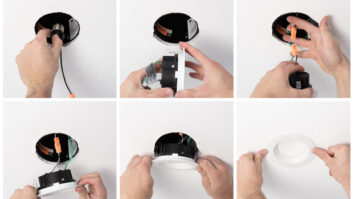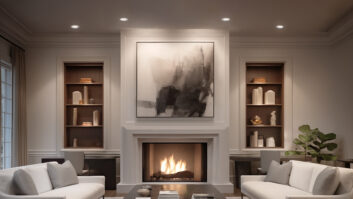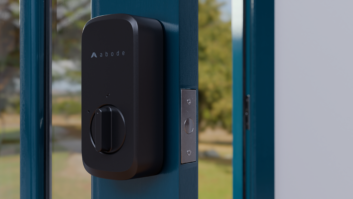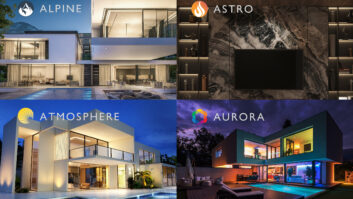As a business sector that thrived in partnership with the building boom that made the 1990s and early 2000s so prosperous, systems integration’s new recession-induced downbeat economic reality doesn’t necessarily mean down and out. There always have been several avenues into custom integration, and while it often lacks the grandiosity of fully kitted installations, retrofit still occupies an important place in the business models of the electronic systems contractors and manufacturers who supply them.

Russ Towers, of Bedford, NH-based Russ Towers LLC, said that home remodeling opens up opportunities for his firm to install distributed audio systems like NuVo Technologies’ Renovia, which uses a home’s existing powerline network to send its signals around the residence.
RS recently spoke with several dealers and a few manufacturers whose products have proven popular in retrofit projects to take the temperature of the business. Unsurprisingly, while there is acknowledgement of a shift away from new construction installations, both ESCs and manufacturers have thrived by catering to the retrofit sector–a channel that has its nuances.
“Retrofits to me would mean someone who has been living in their current home for a while and has decided to finally add feature/function to their home that wasn’t there,” said Andrea Reiner, vice president of InnerSpace Electronics in Port Chester, NY. “We have seen a few examples of this, but it mostly involves that home theater finally being installed in the basement or a new video watching room. We also see retrofits into new homes that are being bought but not renovated at purchase time. Usually, in these situations, they’re opening the walls enough for us to do what we need.”
It is a fair distinction that Reiner’s colleagues also make when defining their retrofit business, including Russ Towers of Bedford, NH-based Russ Towers LLC. Pointing out that many homeowners are staying put and investing in the home they already have, Towers says that this remodeling opens up opportunities for his firm to install distributed audio. “Benefits come on both sides when a home’s being remodeled, for the installer access often for wiring is much better and the chance of a builder/ contractor being on site to assist with any patching that may need to be done, which are all big pluses for the installer,” he explained.
For manufacturers like Somfy Systems, Sonos, and H-P Products, who all make products well suited for the retrofit market, the story is pretty much the same.
“Our business has absolutely prospered in these economic conditions. Our integrator business in particular has more than doubled year over year in the past couple of years,” said Kostas Reissis, director of sales, U.S. integrator channel for Sonos. “Sonos is easy to use, which means that our customers listen to more music than they ever had, and [that] is viewed as a huge value. As a result, we have extremely happy customers. As we all know, in the integrator business, happy customers result in repeat business and referrals… and that is the key to success in this industry.”


Chuck Stern, a Russound dealer and president of SNS in Hampstead, NH, said that his most popular retrofits involve multi-room audio. Wireless connectivity and PLC products like Russound’s Collage make for a faster installation for his company.
Client Interaction
The fast and functional nature of retrofit projects means that particular systems enjoy greater demand than, say, a complete home theater or whole-home automation installation. It makes sense, then, that distributed audio, mounting flat-panel televisions, and establishing wireless networks for greater access to electronic entertainment tops installation project lists.
“The most popular retrofits involve multi-room audio,” said Chuck Stern, a Russound dealer and president of SNS in Hampstead, NH. “Typically, clients ask to add zones, with bedrooms and living areas the most popular areas. They’re also looking to expedite the process, which is why the “no new wires” options make the most sense. Wireless connectivity and PLC products like [Russound’s] Collage make for a faster installation, which lets me turnaround more installations while cutting down on costs.”
Towers, a NuVo Technologies dealer, has had a similar experience when using NuVo’s wholehome audio Renovia, which is based on Powerline Carrier technology. “The process in selling to these customers requires the integrator to be at the customer’s home; no longer is there a need for expensive retail showroom space… This is one of the biggest cost reductions you can make.”
“We used to list products at reduced prices in our proposal, so what we have adopted now is listing prices at full retail and showing a nice size courtesy on the package price,” Reiner said. “This makes up some of the difference, but we’re still working on a lower profit margin than we used to. We have worked at reducing office costs and increasing productivity wherever we can.”
For manufacturers, things are a little less complicated as they produce products based on demands from their dealer base while taking heed of evolving consumer trends. To that end, a company like motor and automation control manufacturer, Somfy Systems, can cater to specific needs of its respective niche market.
“The demand for solutions that provide a balance between artificial and natural lighting automation continues to increase significantly,” said Steve Iommi, business development manager for Somfy. “The TaHomA Total Home Automation controller was designed for this purpose and to expand sales opportunities for Somfy’s integration and window covering dealers. TaHomA utilizes the latest in electronics design and production standards, which provides high performance at very low cost.”
H-P Products’ vice president Greg Calderone was on the same wavelength when he said that there are immediate benefits to retrofitting central vacuums. “First is getting to work directly with the homeowner,” he said. “Unlike working with builders, directly selling to homeowners allows integrators to get paid right away and gives them the opportunity to upsell accessories, including popular hose management convenience products. In general, a retrofit central vacuum equals more dollars per rooftop for the integrator than a new construction sale.”
Getting a Foot in the Door
The toughest part about a retrofit has always been the sale. As Towers honestly acknowledged, “No longer can you roam construction sites and develop working relationships with builders or wait for the client to walk through the showroom door.”
The old-school methods of drumming up business that still have cache are word-of-mouth business and referrals, but more then ever, the onus is on ESCs to get in the door and show clients what they can do.
“You need to be looking for smaller contractors that are focused on the re-modeling business and targeting people that are moving into an existing home by direct mailing,” Towers said. “It’s a challenge for sure, and one we are taking on every day here in the New England market. Working the old customer base and bringing them up to date on what you have to offer and how new products such as the Music Port and Color Touch screen from NuVo, can improve what is already in place.”
InnerSpace has been working on increasing its online presence, but, like Towers, has turned to good old-fashioned mail to attract builders and homeowners. “We are doing direct-mail campaigns to town hall building permits pulled and we are still working hard at our relationships with architects, builders, and designers,” he said. “The professional networks, and existing clients are still our best channels of marketing.”
There is also Stern’s approach, which should be part of every installer’s repertoire: selling an experience. “Whether it’s multi-room entertainment or whole-house controls, I try to help our clients imagine how their lives will be enhanced after they invest in a retrofit,” Stern said. “And, with security being a hot topic, the value of CCTV monitoring is easy to communicate. It’s no secret that break-ins increase during a tough economy.”
For manufacturers it is less about the pitch than it is about making the product as desirable as possible. In the case of Sonos, its extensive range of wireless music streaming products means that from day one it has been suitable for retrofits.
“One of the unique aspects of Sonos is our proprietary wireless network, providing extremely reliable communications, ensuring that the music never stops,” Kostas said. “In the end, we have provided our dealers with a system that allows them to target existing homes and install a six-to-eight room system in a day or two, as opposed to the two weeks that it takes to install the same sized system with a traditional multi-room music system.”
Somfy has made its niche automation products more attractive by making them scalable to customers’ needs and budgets, especially with TaHomA, which Iommi said features “powerful simplicity.”
For its part, H-P has focused on making installation trainers available to integrators to help debunk the belief that installing central vacuum systems in existing homes is a chore. “With the increase in remodeling as the economy improves, there are more opportunities for integrators to add these profitable products to their mix,” he explained. “Most homes can easily be retrofitted with a central vacuum as long as there is access to the walls from a crawlspace, basement or attic.”
It certainly hasn’t been easy being an integrator the past three years, but custom integration is still a thriving business, especially because integrators have been willing to cast their nets wider. Retrofit is just one solution that dealers have been using to stay in an industry they clearly love and want to continue to serve.
Approaches to Retrofit

Andrea Reiner
Retrofit has its own special challenges and triumphs. Here, some of the people interviewed for this article share their recent experiences making remodels work.
Andrea Reiner, InnerSpace: “We installed a Savant audio system and Lutron Homeworks wireless lighting system in a new 9,000-square-foot house that didn’t have much wire. The client wasn’t doing much work in the house, and the challenge was getting power to all the RF locations without damaging the house.”
Russ Towers, Russ Towers LLC: “One very successful recent installation for Russ Towers LL C was a very large contemporary home in Manchester by The Sea on the Boston North Shore. This was a customer that was looking to do some basic AV installing with a 65-inch LED TV and some sound. The house is all glass and steel. The [challenge] was how to get eight zones of distributed audio from room to room. NuVo to the rescue! Renovia is a great system for this type of installation as the need for running wire back to a single head-end is minimal; the system is a line level carrier system (it uses the home’s AC wiring to transmit to local 50 watt amplifiers).”
Chuck Sterns, SNS : “Attic crawl spaces can be tough. On one recent job, the space was so tight that we couldn’t use a standard extension. The only way to pull wire was to keep adding extension bits, which is incredibly tedious and expensive. Over an hour of labor was added to the project.”
Llanor Alleyne is a Residential Systems contributing editor based in Brooklyn, NY.







